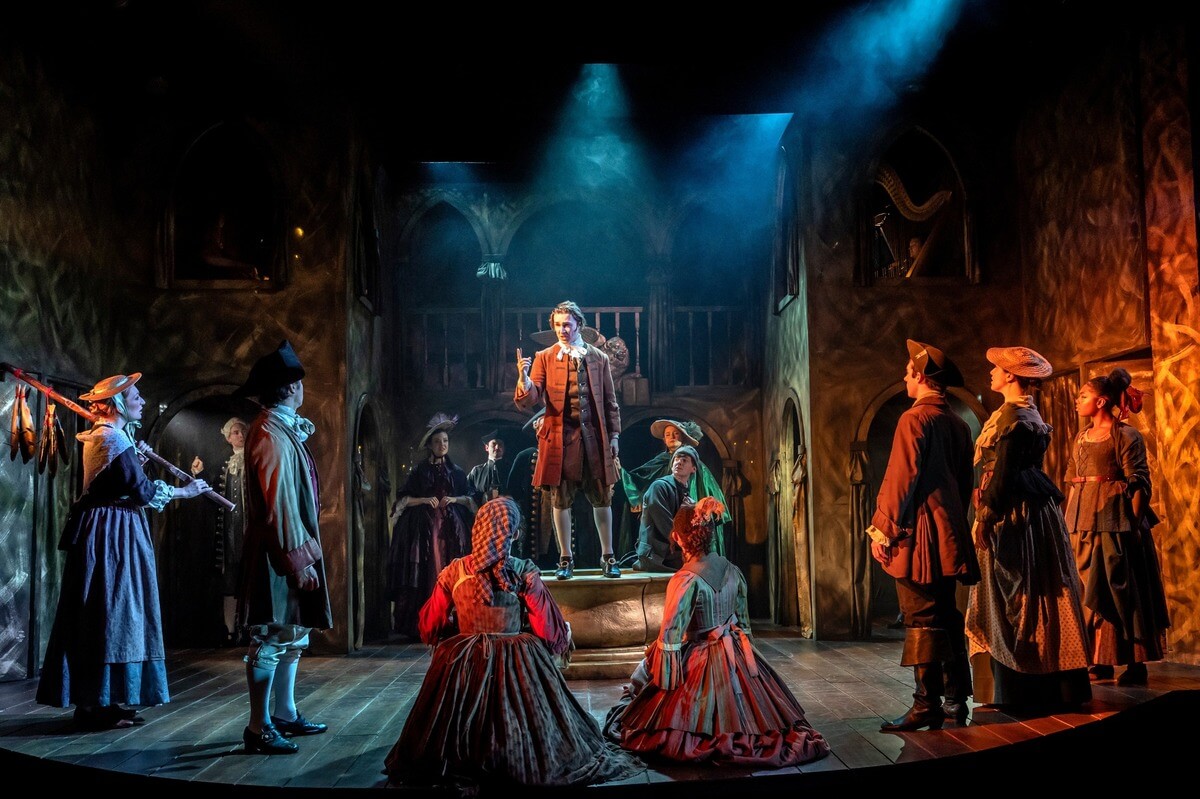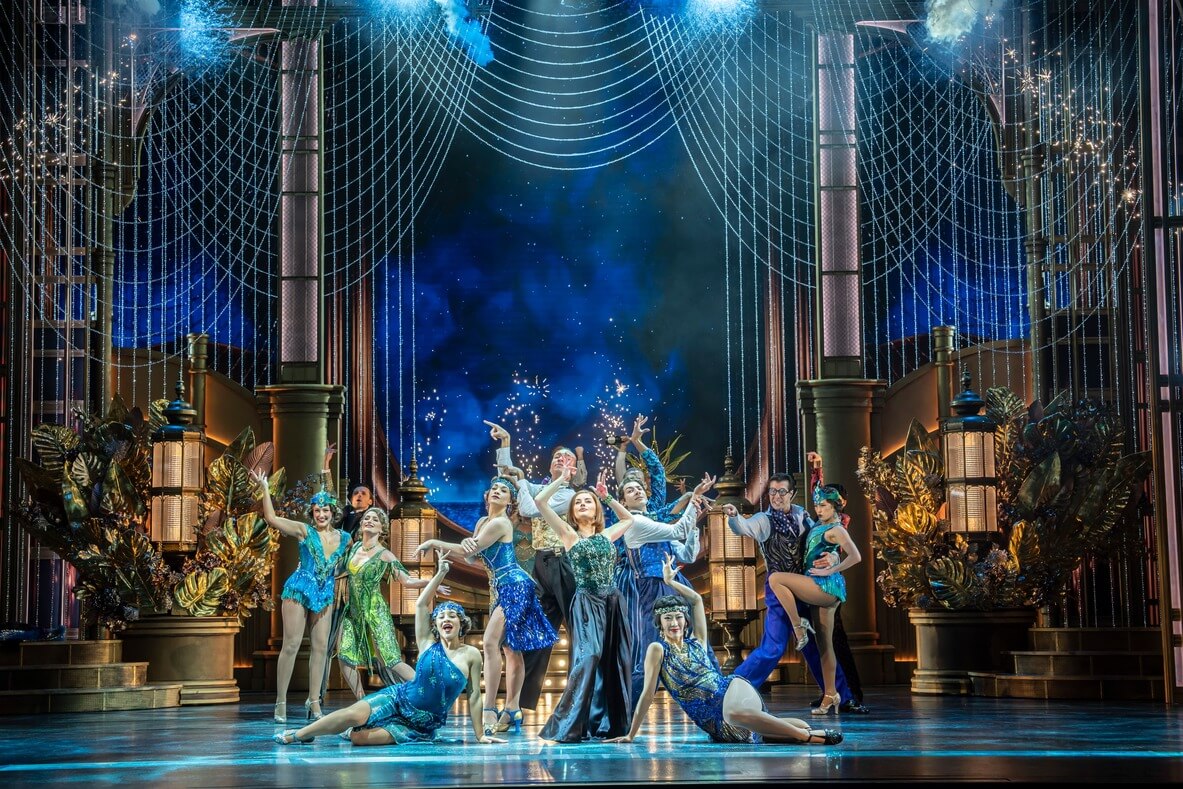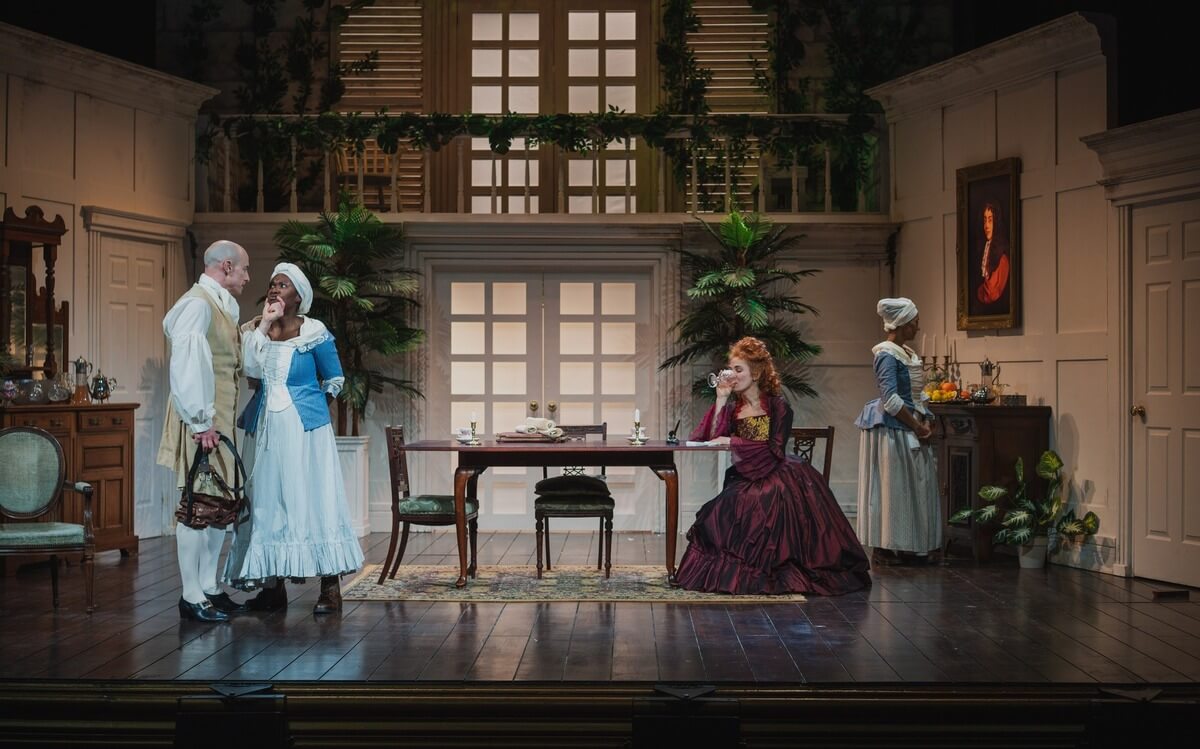Drawing on multitudinous influences, STILETTO — the new musical with book by Tim Luscombe, music and lyrics by Matthew Wilder — uses as its inspiration, a shallow dive into the murky waters of Italy’s operatic past and specifically the practice of castrating young male singers to preserve the purity of their treble and boy soprano voices into adulthood, where they would be celebrated in female vocal roles.
Marco (Jack Chambers) is one such vocal celebrant who is tutored to the point of haranguing by his older lover and mentor Faustino (Greg Barnett) in the hopes of gaining the approval and patronage of the wealthy and bored Azzurra D’Orozco (Kelly Hampson). Marco can’t escape Faustino’s oppressive controlling quickly enough and his departure is hastened after encountering and becoming enamoured with a feisty black former slave girl Gioia (Jewelle Hutchinson) who is possessed of an equally impressive voice. Meanwhile Azzurra’s useless husband Pietro (Douglas Hansell) is more occupied with gambling and bedding his accountant Luigi (Sam Barrett who gets to perform the playfully tricksy Go Along) whom he has moved into his wife’s home. Other roles worthy of note include mute Niccolo (Connor Wood who gets perhaps the best song in the show, the reflective No Words delivered during a company freeze) and an overtly camp cardinal, Don Ricci (Alex Anstey) who is every inch a creepy panto dame. Finally whilst it would be nice to think that mezzo soprano men were two a penny and easy to find in 2020’s West End, here Marco’s bemasked alter ego is performed by Jennie Jacobs.
There are moments of high hysteria (How Do I Get Through?) and the Thénardier-esque (Without Me) which could perhaps improve with re-writing, but in general there is a lot of promising material presented in this production. This may partly be due to the obvious stylistic influences of Les Mis, Phantom and even My Fair Lady in the orchestrations — indeed refrains and phrases from many other shows never seem far from the surface.
Directed by David Gilmore on a set by Ceci Calf and costumes credited to designer Anna Kelsey (although the programme references costume hire), the show’s scenes come and go at considerable pace. Andrew Johnson’s sound design also adds a not-always-subtle evocation of Venice, which fills the few lulls. The piece has considerable potential, not least because of the 12 piece orchestra (which includes notable harp, mandolin, cello and bass trombone parts) under the jurisdiction of West End veteran MD Jae Alexander.
And whilst the STILETTO might not yet be ready to sweep awards ceremonies, there is certainly sufficient material in evidence with potential for fine-tuning into a very commercial musical proposition.

 Stiletto at Charing Cross Theatre. Photo Johan Persson.
Stiletto at Charing Cross Theatre. Photo Johan Persson.

